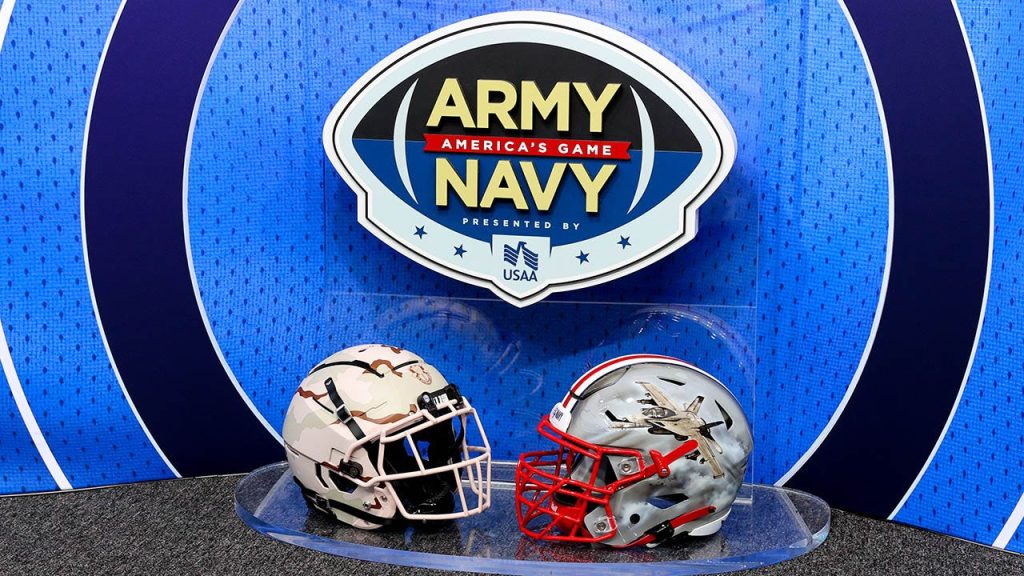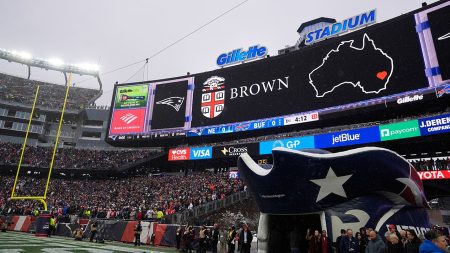The landscape of college athletics has undergone a seismic shift with the advent of Name, Image, and Likeness (NIL) deals, transforming how student-athletes navigate their collegiate careers and potentially earn significant sums. This new era of commercialized amateurism has created a stark divide between institutions that can leverage NIL opportunities and those that cannot. Two prominent institutions, the United States Military Academy (Army) and the United States Naval Academy (Navy), find themselves on the other side of this transformative wave, unable to participate in the lucrative NIL market due to the unique nature of their service academies. This distinction, as USAA CEO Wayne Peacock aptly describes, creates a “one-way portal” into these institutions, where student-athletes commit not only to their sport but also to a future of military service.
The contrast between the NIL-fueled world of college sports and the academies’ unique circumstances is particularly striking in the context of high-profile recruitments. Recent examples highlight the immense financial potential of NIL deals, with athletes like Bryce Underwood flipping his commitment to Michigan for a seven-figure sum and A.J. Dybantsa reportedly receiving a $5 million NIL offer to play basketball at BYU. These staggering figures underscore the transformative power of NIL and further emphasize the divergent paths chosen by student-athletes entering service academies. Cadets and midshipmen, by their commitment to serve, forgo the potential for such financial gains, choosing instead a path of duty and service to their country.
Despite their inability to compete in the NIL arena, the Army and Navy football programs continue to thrive, exemplifying the enduring power of tradition, teamwork, and commitment. As the 125th edition of the Army-Navy football game approaches, the significance of this annual event is amplified by the unique context of the NIL era. Wayne Peacock, CEO of USAA, the long-standing sponsor of the game, emphasizes the purity of the competition, highlighting the unwavering dedication and camaraderie between the two academies. He describes the game as “college football at its purest form,” where players compete with the intensity of a battle, yet unite in a shared sense of duty and patriotism after the final whistle.
The Army-Navy game transcends the typical rivalry dynamic. The players, while fierce competitors on the field, represent a shared commitment to something larger than themselves: service to their country. This shared purpose creates a unique bond, exemplified by the post-game tradition of the teams marching together and singing each other’s alma maters. This act of mutual respect and camaraderie stands in stark contrast to the often-acrimonious relationships between other rival schools and reinforces the idea that the Army-Navy game represents something truly special in the world of college athletics. It’s a testament to the enduring values of teamwork, discipline, and patriotism.
Peacock further emphasizes the unique appeal of the service academies, stating, “There’s only a one-way portal into Army and Navy.” This one-way portal represents a commitment to something beyond individual gain, a choice to serve a greater purpose. The student-athletes who choose this path are not driven by financial incentives but by a desire to serve their country and be part of something larger than themselves. This dedication to service, combined with the academies’ emphasis on teamwork and culture, allows them to field competitive teams despite operating outside the realm of NIL deals.
The Army-Navy football game serves as a powerful reminder of the enduring values of college athletics amidst the rapidly changing landscape of NIL. It showcases the power of teamwork, discipline, and commitment to a greater cause, demonstrating that success can be achieved without the allure of financial incentives. As the two academies prepare to clash once again, their rivalry stands as a symbol of the enduring spirit of competition and camaraderie, reminding us that the true value of sport extends far beyond financial gain. The continuing partnership between USAA and the Army-Navy game, extending through 2030, further solidifies this commitment to the values embodied by these two institutions, ensuring that this unique tradition continues to inspire for generations to come.














